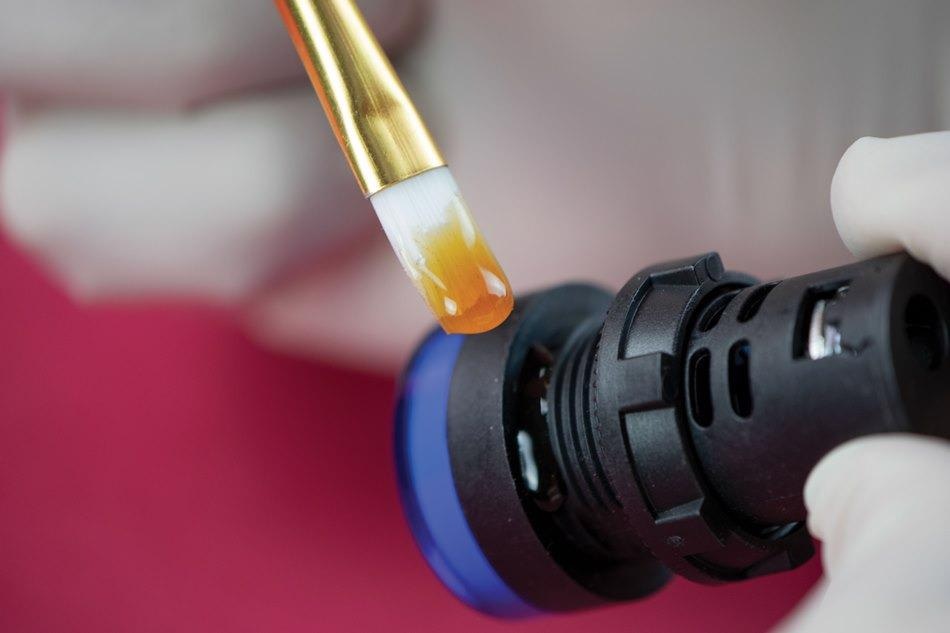Master Bond EP62-1HTMed is a two part epoxy that meets the requirements of ISO 10993-5 for non-cytotoxicity and therefore can be utilized in many medical device applications. It features high temperature resistance, good flow properties and is suitable for bonding, sealing and coating.

Image Credit: Master Bond Inc.
“This product resists repeated sterilization cycles, including STERRAD® and autoclaving. It is also capable of withstanding exposure to gamma radiation, ethylene oxide, bleach as well as other aggressive sterilants and chemicals. EP62-1HTMed offers a tensile strength of 10,000-11,000 psi and adheres well to a variety of similar and dissimilar substrates, including metals, plastics, rubbers, ceramics and composites. This electrically insulative compound has a volume resistivity of more than 1014 ohm-cm, a glass transition temperature of 150-155 °C and is serviceable from -60 °F to +450 °F [-51 °C to +232 °C].
EP62-1HTMed has an advantageously long working life of 12-24 hours for a 100 gram mass and requires moderate heat for curing. Cure schedule options are 60-70 minutes at 176-212 °F [80-100 °C] or 20-30 minutes at 257 °F [125 °C]. Post curing at 212-302 °F [100-150 °C] for 3-5 hours is recommended to achieve optimal performance properties. The epoxy contains no solvents or diluents and has low shrinkage upon cure with a hardness of 80-90 Shore D. This system has a mix ratio by weight of 100 to 5 and can be supplied in standard sized units: ½ pint, pint, quart, and gallon kits. It can also be packaged in premixed and frozen syringes, which ensures that there is no mixing involved and makes it compatible for automated dispensing systems to streamline production.
Master Bond Biocompatible Adhesives
Master Bond EP62-1HTMed is a high temperature and chemically resistant epoxy that meets ISO 10993-5 specifications. This two part system with several versatile cure schedules and convenient handling, can withstand exposure to repeated autoclaving and aggressive sterilants.
Source: http://www.masterbond.com